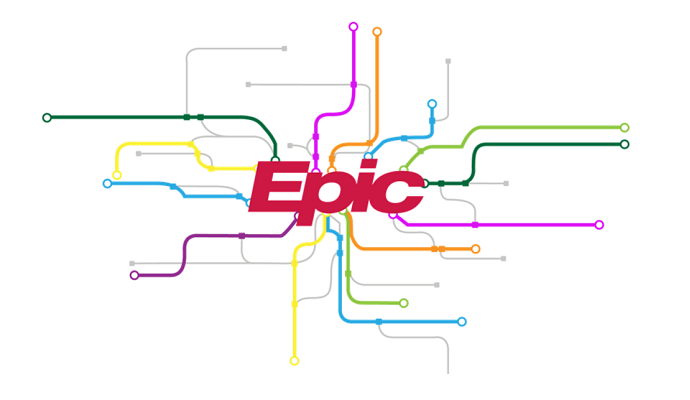I. Introduction
Healthcare organizations often use Electronic Medical Record (EMR) systems like EPIC to manage and store patient data. However, with the increasing number of healthcare systems and applications, it has become necessary to integrate these systems to enable effective and efficient healthcare delivery. This integration process requires the use of healthcare interoperability standards, such as Health Level Seven (HL7), which defines a set of standards for exchanging healthcare information between systems. In this article, we will discuss the challenges that healthcare organizations face when integrating EPIC EMR with other healthcare systems using HL7 interface standards.
II. Challenges of Integrating EPIC EMR with Other Healthcare Systems
a) Compatibility Issues Between Different Healthcare Systems
One of the major challenges of integrating EPIC EMR with other healthcare systems is the issue of compatibility. Healthcare organizations often use different systems that may not be compatible with EPIC, which makes it difficult to share patient data. This can lead to inefficiencies and errors in healthcare delivery, which can ultimately impact patient care.
b) Inconsistent Data Formats and Data Definitions
Another challenge of integrating EPIC EMR with other healthcare systems is the inconsistency in data formats and data definitions. Different healthcare systems often use different terminologies to describe the same data, making it difficult to share information between systems. This inconsistency in data formats and data definitions can result in incorrect data being transferred between systems, leading to potential errors in patient care.
c) Complexity of Healthcare Workflows
Healthcare workflows can be complex, and integrating EPIC EMR with other healthcare systems can add to this complexity. Integrating multiple systems can lead to an increase in the number of workflows and processes, which can be challenging to manage. This complexity can lead to confusion and errors, which can ultimately impact patient care.
d) Lack of Interoperability Between Healthcare Systems
Finally, the lack of interoperability between healthcare systems is a significant challenge when integrating EPIC EMR with other systems. Healthcare systems often use different communication protocols and data formats, making it difficult to share information between systems. This can lead to incomplete patient information being shared between systems, which can result in suboptimal healthcare delivery.
III. Solutions for Integrating EPIC EMR with Other Healthcare Systems
- Implementing standardized data formats and data definitions using HL7 standards: One of the primary solutions for integrating EPIC EMR with other healthcare systems is to use HL7 standards for transmitting data. HL7 provides a standardized way for different healthcare systems to exchange information in a consistent format. This can greatly reduce compatibility issues and ensure data quality and consistency.
- Creating an enterprise-wide data governance strategy to ensure data quality and consistency: To ensure that data is accurate and consistent across all systems, healthcare organizations can create an enterprise-wide data governance strategy. This strategy should include policies and procedures for managing data, as well as guidelines for data entry and maintenance. By enforcing data standards and governance practices, healthcare organizations can improve data quality and consistency, which can make integration with other systems easier.
- Developing custom interfaces for different healthcare systems to ensure compatibility: When integrating EPIC EMR with other healthcare systems, custom interfaces may need to be developed to ensure compatibility. These interfaces can bridge the gap between different systems and allow them to communicate seamlessly. By developing custom interfaces, healthcare organizations can ensure that all data is accurately transmitted and received by different systems.
- Using middleware solutions to integrate different healthcare systems: Middleware solutions can be used to connect different healthcare systems and facilitate data exchange. These solutions act as a middle layer between different systems and can translate data between them. This can make integration easier and more efficient.
IV. Best Practices for Integrating EPIC EMR with Other Healthcare Systems
- Performing a thorough analysis of data requirements and workflows: Before integrating EPIC EMR with other healthcare systems, it is important to perform a thorough analysis of data requirements and workflows. This can help healthcare organizations understand the data that needs to be exchanged and how it should be transmitted.
- Developing a comprehensive testing strategy to ensure interoperability and data accuracy: Testing is critical when integrating EPIC EMR with other healthcare systems. A comprehensive testing strategy should be developed to ensure interoperability and data accuracy. This can help identify any issues with the integration and ensure that data is accurately transmitted between systems.
- Establishing clear communication between all stakeholders involved in the integration process: Clear communication between all stakeholders involved in the integration process is critical. This can help ensure that everyone is on the same page and that any issues are addressed in a timely manner.
- Providing ongoing maintenance and support for the integrated systems: Ongoing maintenance and support are necessary to ensure that integrated systems continue to function properly. This includes regular updates and maintenance to ensure compatibility and data accuracy.
V. Case Studies of Successful Integration of EPIC EMR with Other Healthcare Systems
- Mayo Clinic: Mayo Clinic successfully integrated EPIC EMR with their laboratory and radiology systems. This integration allowed for real-time data exchange and improved care coordination.
- University of California San Francisco: UCSF integrated EPIC EMR with their electronic prescribing system. This integration allowed for more accurate and efficient medication management.
VI. Conclusion
Integrating EPIC EMR with other healthcare systems can be challenging, but using HL7 standards and following best practices can make the process easier and more efficient. By implementing standardized data formats, creating an enterprise-wide data governance strategy, developing custom interfaces, and using middleware solutions, healthcare organizations can improve interoperability and data accuracy. Additionally, performing thorough analysis, developing comprehensive testing strategies, establishing clear communication, and providing ongoing maintenance and support can help ensure successful integration.






